2025 Cobble Beach Classics presents A Tribute to Mercedes-Benz
1886 Benz Patent MotorWagen Replica – Lane Motor Museum – Nashville, TN
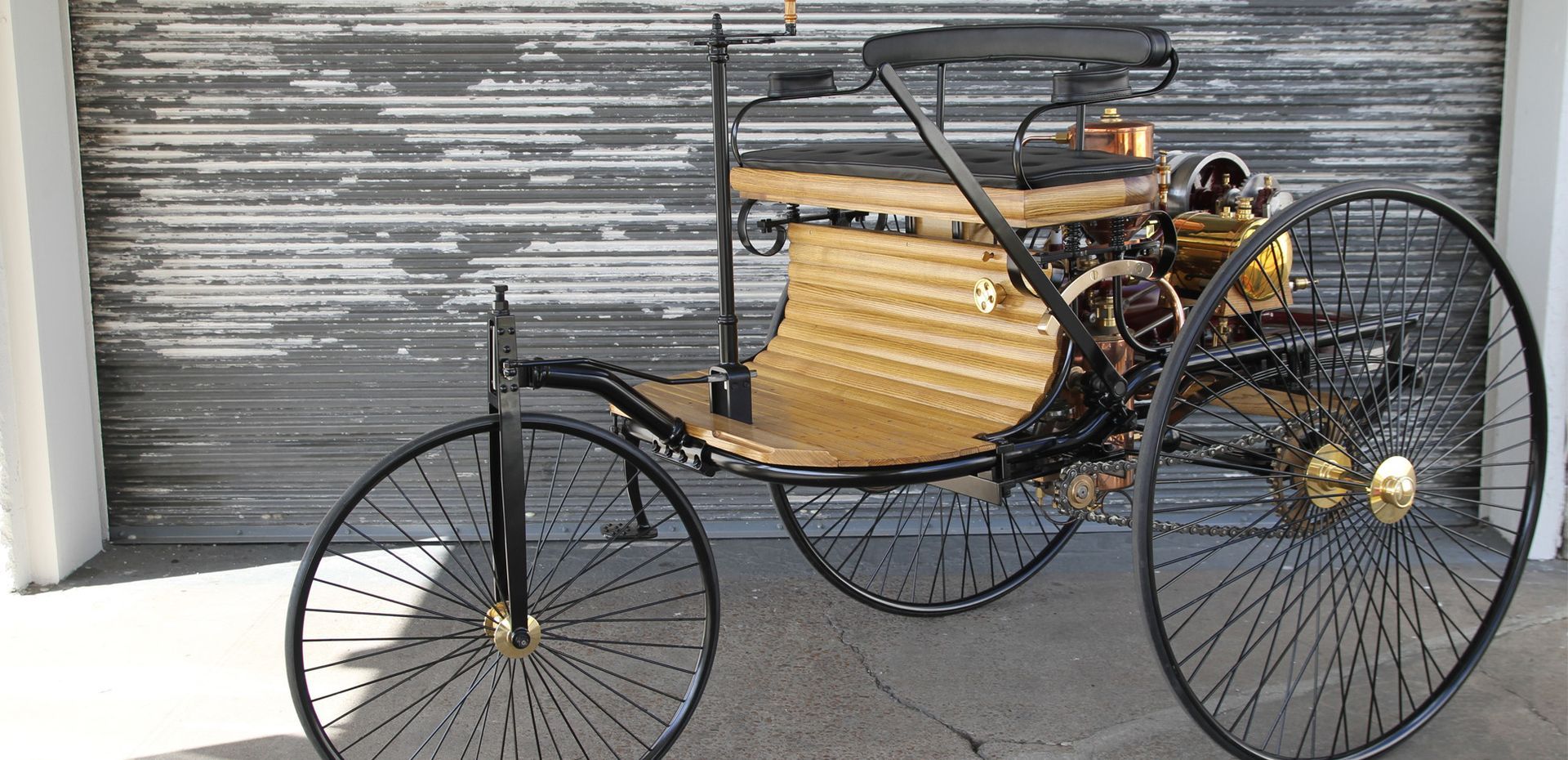
The first stationary gasoline engine developed by Carl Benz was a one-cylinder two-stroke unit which ran for the first time on New Year’s Eve 1879. Benz had so much commercial success with this engine that he was able to devote more time to his dream of creating a lightweight car powered by a gasoline engine, in which the chassis and engine formed a single unit.
On January 29, 1886, Carl Benz applied for a patent for his “vehicle powered by a gas engine.” The patent – number 37435 – may be regarded as the birth certificate of the automobile. In July 1886 the newspapers reported on the first public outing of the three-wheeled Benz Patent Motor Car, model no. 1. The major features of the two-seater vehicle, which was completed in 1885, were the compact high-speed single-cylinder four-stroke engine installed horizontally at the rear, the tubular steel frame, the differential and three wire-spoked wheels. The engine output was 0.75 hp (0.55 kW). Details included an automatic intake slide, a controlled exhaust valve, high-voltage electrical vibrator ignition with spark plug, and water/thermo siphon evaporation cooling.
Do you want to win VIP tickets to the Cobble Beach Concours d’Elegance?
We’re giving away two VIP tickets to this year’s show! Don’t miss out –
click here to enter our exclusive giveaway!
1935 Mercedes-Benz 130H – Lane Motor Museum – Nashville, TN

One of the most famous names in automotive history, Daimler-Benz (“Mercedes” was only a Benz model name in 1901; the company became known as Mercedes-Benz in 1926) can trace its roots back to 1889 and the first motorcar, Karl Benz’s Patent Motorwagen. By the 1930s, America was the largest export market for Mercedes cars as they were favored by many high-society millionaires.
The 130H was Daimler-Benz’s first attempt at a production rear-engine car. The “H” is for “heck”, the German word for rear. This two-door car was offered as a hardtop, open hardtop (seen here) or cabriolet. With a shape inspired by Rumpler’s Tropfen-Auto, the frame is a forked backbone design (a la Ledwinka’s Tatras), and the usual Mercedes swing-axle suspension was used. While it was not a commercial success, its ideas were later seen in other cars, such as the Volkswagen Beetle.
Do you want to win VIP tickets to the Cobble Beach Concours d’Elegance?
We’re giving away two VIP tickets to this year’s show! Don’t miss out –
click here to enter our exclusive giveaway!
1938 Mercedes-Benz 540K Sport Tourer – Gilmore Car Museum – Hickory Corners, MI
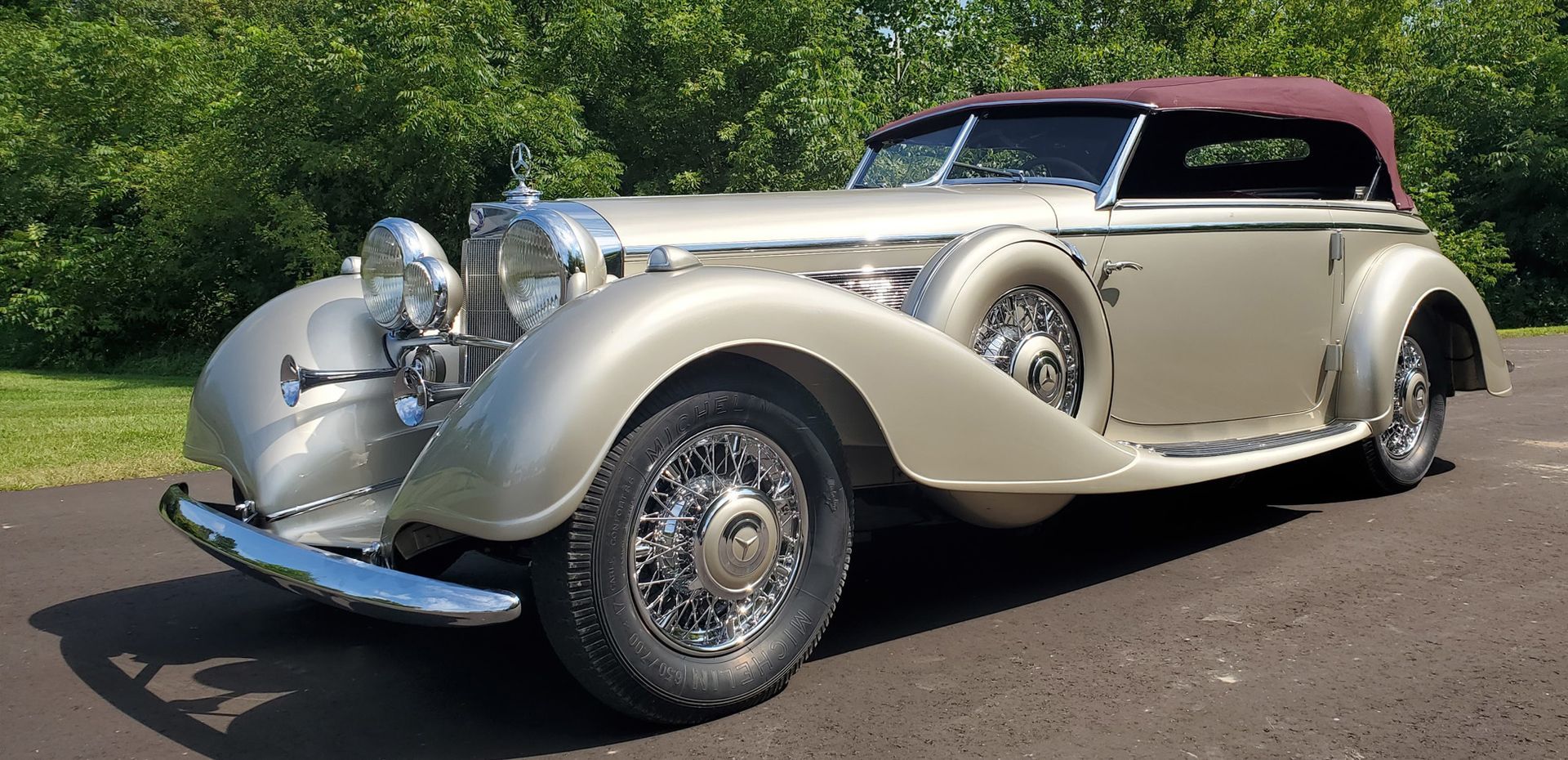
This beautiful automobile is an ultra-rare 1938 Mercedes 540K Sport Tourer, which had been hidden away in a World War II-era basement-bunker in Germany and discovered nearly 60 years later. Only two 540K Sport Tourer models were ever built, with this car being the sole survivor. The car’s original owner lived in Dresden, Germany, and shortly after receiving it, World War II broke out with Germany being the epicenter. In an effort to protect his car from the ravages of war and conceal it from enemy troops, he knocked out a portion of his basement, drove the car in and concealed it by bricking up the doors and windows to make a kind of bunker. It remained there, remarkably surviving the 1945 bombing of Dresden, for nearly 6 decades.
Prior to World War II, Mercedes-Benz was arguably one of the world's most prestigious European automakers and the choice of cars of kings, captains of industry, and the rich and famous alike. Built between 1936 and 1939, the supercharged Mercedes 540K has become legendary for its exquisite beauty and breath-taking performance and is coveted by collectors worldwide. In all only 406 in 12 different body styles were crafted before war halted production, yet only two 540K Sport Tourers were ever produced.
With the fall of the Nazi regime and the end of WWII, Germany was divided by the Allies with Dresden becoming part of Soviet-controlled East Germany. This remarkable auto remained hidden until after the fall of the Berlin Wall, when it was finally discovered. The vehicle was complete and in its original condition, only showing the typical deterioration from age and neglect. Given the rarity and importance of the car, the decision was made to have it completely restored, which was finished in 2005. That same year, it debuted at the world-renowned Pebble Beach Concours d’Elegance where it was awarded a Best-in-Class award. This custom-built Mercedes features a Mother-of-Pearl dash, V-windshield, disappearing convertible top, and could reach speeds well over 100 mph. In 1938, it sold new for an estimated $12,000. While that may not seem to be a high dollar amount today, it was a substantial price compared to Chevrolet’s convertible at $755 or the Ford Deluxe convertible sedan at $900. Today, being the only remaining example of the two 540K Sport Tourer models made and for its incredible story of survival, this magnificent automobile is considered one of the rarest Mercedes-Benz in existence.
Do you want to win VIP tickets to the Cobble Beach Concours d’Elegance?
We’re giving away two VIP tickets to this year’s show! Don’t miss out –
click here to enter our exclusive giveaway!
1960 Mercedes-Benz 300SL Roadster – Private Collection – ON
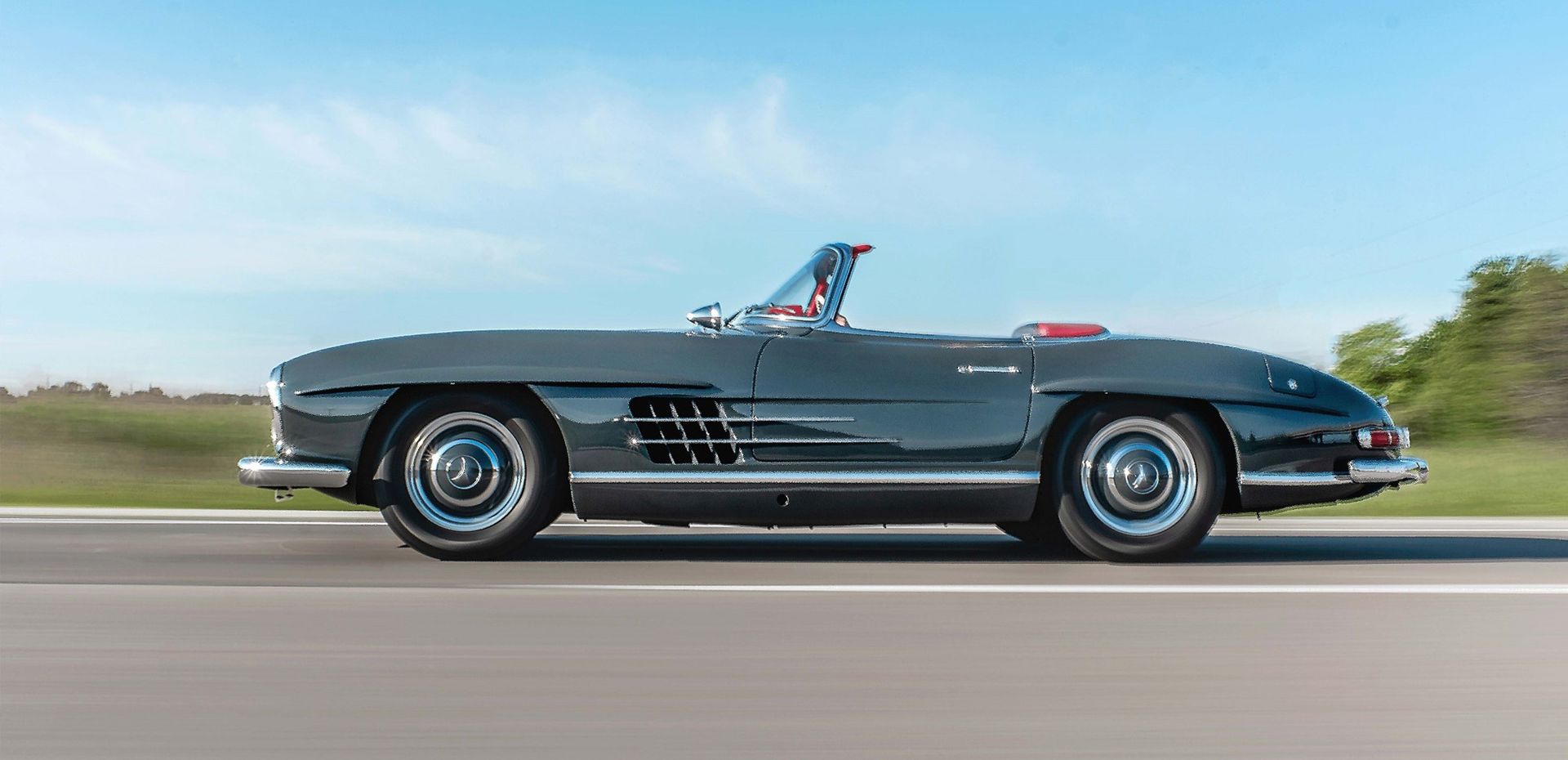
The success story continued in 1954 with the 300 SL “Gullwing”, a coupe that turned the heads of sports car enthusiasts with its unique design and extraordinary power. The roots of the car’s development lay in the USA: “What we need over here is a great Mercedes-Benz sports car,” US importer Maximilian Hoffman is reported to have said. In September 1953, he convinced the Board of Management at Daimler-Benz to build a series version of the successful 300 SL racing sports car. Incredibly, just five months later in February 1954, the Mercedes-Benz 300 SL (W 198) made its sensational debut at the International Motor Sports Show in New York. The new sports car exuded elegance and innovation in equal measure. It was the world’s first four-stroke production passenger car to be equipped with output- and efficiency-enhancing direct fuel injection. Breath-taking engine output of 215 hp (158 kW) provided a top speed of 250 km/h, depending on final drive ratio. That made the 300 SL the fastest production car of its day.
Looking to expand upon his success with the Gullwing coupe, United States Mercedes-Benz importer Max Hoffman thought that a convertible version of the 300 SL would also sell quite well, and the 300 SL Roadster was introduced in 1957. Of course, as the 300 SL would lose its top, engineers had to reinforce and modify the space-frame chassis to fit conventionally hinged doors. Through lowering the height of the chassis, this simultaneously allowed for greater ease of entry. Cosmetic changes were minor and included a smaller grille opening and dual chrome strips along the side sills, giving the car a more streamlined and glamorous look. At the rear, the spare tire was repositioned below the trunk floor, necessitating a smaller fuel tank but also maintaining reasonable luggage space. These revisions to the roadster added some 250 lbs. to the total weight of the car, mostly due to the convertible top.
Looking to keep the speed and performance of the closed 300 SL for the new roadster despite its gain in weight, Mercedes-Benz fitted the more sporting NSL engine of the coupe to all roadsters as standard equipment. This made the roadster capable of top speeds that ranged from 133 to 155 mph, depending on the final drive ratio specified. However, the stunning performance and design of the 300 SL Roadster did not come cheap, at a list price of $11,000; but……it was worth every penny!
Do you want to win VIP tickets to the Cobble Beach Concours d’Elegance?
We’re giving away two VIP tickets to this year’s show! Don’t miss out –
click here to enter our exclusive giveaway!
1961 Mercedes-Benz 190SL Roadster – Travis Agresti – East Gwillimbury, ON
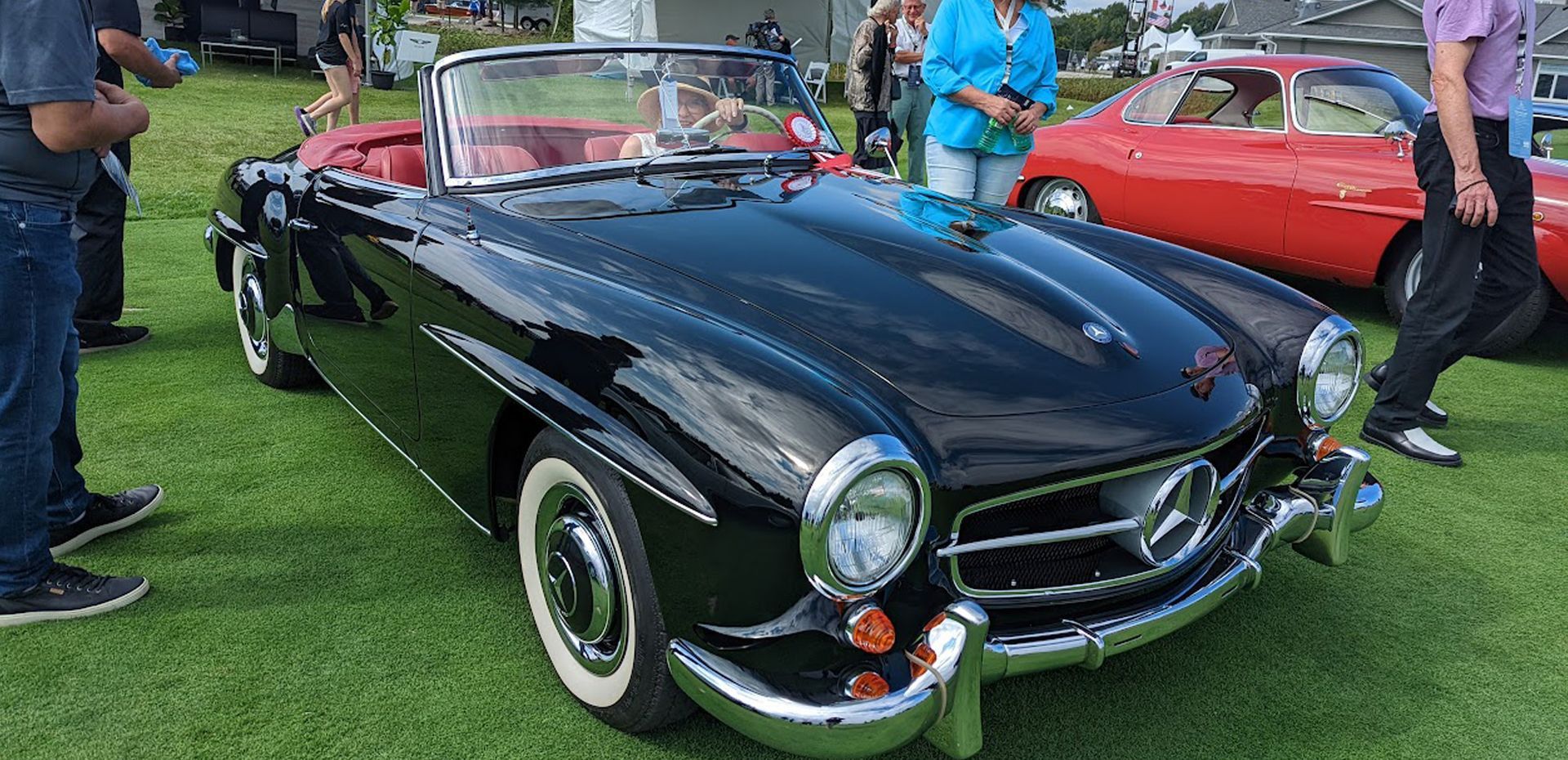
After witnessing the success of the Mercedes-Benz 300 SL coupe and roadster, foreign car importer and dealer Max Hoffman believed that a somewhat smaller and less expensive car, but that bore similar styling to the 300 SL, could also be commercially successful. Executives at Mercedes-Benz did not take much convincing of this, and the resulting model was named the 190 SL. The roadster was introduced at the 1954 New York Auto Show and proved to be a popular model for the marquee and remained in production for nine years. The roadster is powered by a 1.9-liter, inline four-cylinder engine with twin Solex carburetors, making the engine capable of producing 120 hp and providing a top speed of over 105 mph. Intended for touring, the 190 SL featured large amounts of luggage space and offered customers the choice of having either a hardtop, convertible soft top, or both, making it ideal for year-round use.
Do you want to win VIP tickets to the Cobble Beach Concours d’Elegance?
We’re giving away two VIP tickets to this year’s show! Don’t miss out –
click here to enter our exclusive giveaway!
2006 Mercedes-Benz SLR McLaren Coupe – Private Collection – ON
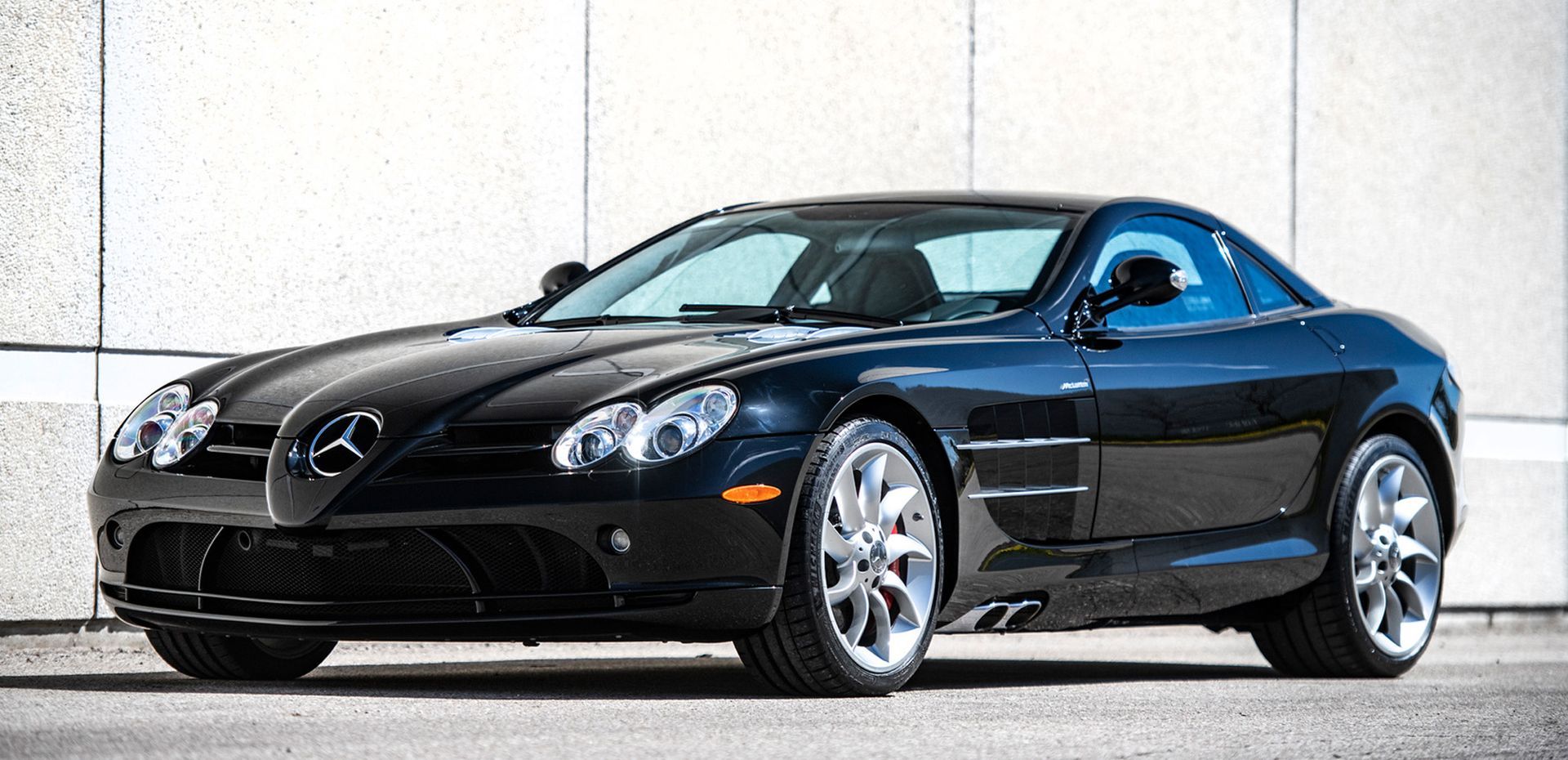
At the 1999 North American International Auto Show, Mercedes-Benz presented their Vision SLR concept, inspired both by the Mercedes-Benz 300 SLR Uhlenhaut Coupé of 1955, which was a modified Mercedes-Benz W196S race car, and the design of closed-wheel Formula One cars. Mercedes-Benz had experience competing in Formula One in the past as a constructor and won back to back championships in their debut season 1954 then 1955. Also during the jointly developed project of Mercedes-Benz SLR McLaren in 2003 and Mercedes-Benz acquiring a 40 per cent ownership of McLaren Group, Mercedes competed in Formula One in partnership with the McLaren Formula One Team. Also, Mercedes was developing powertrains and electronics for McLaren's Formula One cars. The car was presented to the public as "Tomorrow’s Silver Arrow" in a clear reference to the Silver Arrows of the golden age of Mercedes in competition during the fifties. The concept car was fitted with a 5.0-litre supercharged AMG V8 engine able to generate a power output of 557 hp and 531 lb⋅ft of torque at 4,000 rpm, mated to a 5-speed automatic gearbox with Touchshift control.
Wanting to bring the concept to production following its positive reception, Mercedes joined forces with their Formula One partner, McLaren, thus creating the Mercedes-Benz SLR McLaren. Mercedes did the styling on the car while McLaren was fully responsible for everything else, from the design and the engineering to the manufacture and the testing of each car at the production line. The production version of the car was unveiled to the general public on November 17, 2003. In order to give the car the performance that Mercedes wanted, McLaren had to radically alter the concept for better weight distribution, including moving the engine almost a meter back and lowering the fuel tank. Smaller adjustments included more complex vents on both sides of the car, a redesigned front with the three-pointed star plunged in the nose and red tinted rear lights.
Do you want to win VIP tickets to the Cobble Beach Concours d’Elegance?
We’re giving away two VIP tickets to this year’s show! Don’t miss out –
click here to enter our exclusive giveaway!
2015 Mercedes-Benz SLS AMG GT Final Edition – Hadleigh van Barneveld – Waterdown, ON
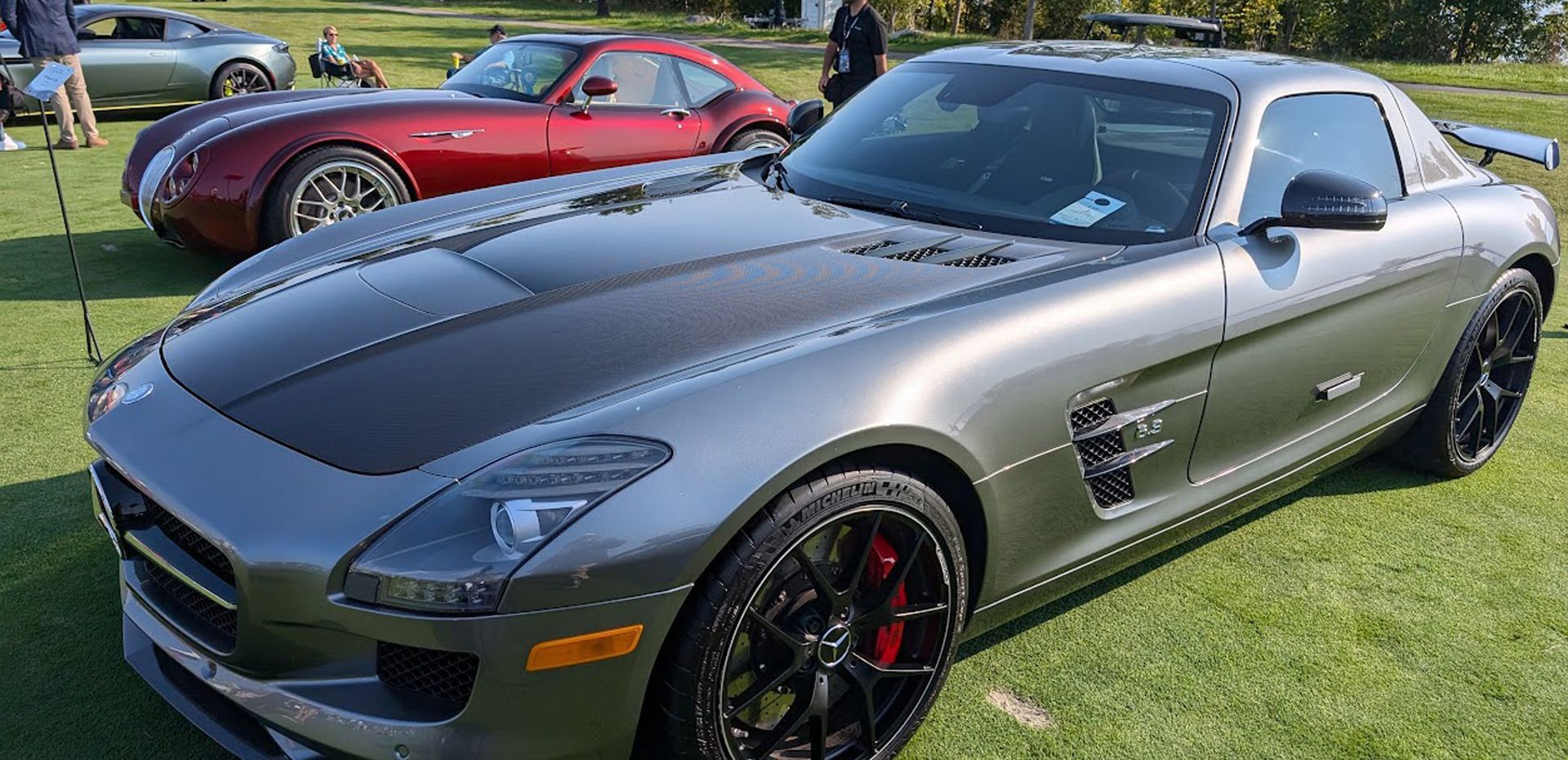
The SLS AMG GT Final Edition was commissioned by Mercedes-Benz to celebrate the SLS AMG GT’s success. A limited-edition series consisting of only 350 units total, the Final Edition production run consisted of approximately 200 coupes and 150 roadsters.
At the SLS AMG GT’s heart is a 6.3-liter V-8 engine producing 583 horsepower at 6,800 rpm, with a maximum torque output of 479 pound-feet at 4,750 rpm. Acceleration is brisk, with a 0–62 mph sprint time of just 3.7 seconds, racing onwards to 124 mph in 11.2 seconds, and an electronically limited top speed of 198 mph. The car’s performance is managed through Mercedes-Benz’s AMG Speedshift DCT seven-speed transmission. The 350 Final Edition cars received exclusive equipment which included a carbon fiber hood with central-air outlet, front splitter, the carbon fiber rear wing seen on the SLS AMG Black Series, and lightweight forged alloy wheels painted matte black.
Considering the entirety of SLS AMG production, many consider the Final Edition cars to be the most desirable to own and enjoy, as they tread the line between the subtlety of the regular-production SLS AMGs and the aggressive, track-focused Black Series cars, while benefitting from the slight boost in power of the late-production GT models.
Do you want to win VIP tickets to the Cobble Beach Concours d’Elegance?
We’re giving away two VIP tickets to this year’s show! Don’t miss out –
click here to enter our exclusive giveaway!
2021 Mercedes-Benz AMG GT Black Series “P-One Edition” – Lauren Mendelson and David Mendelson – Troy, MI
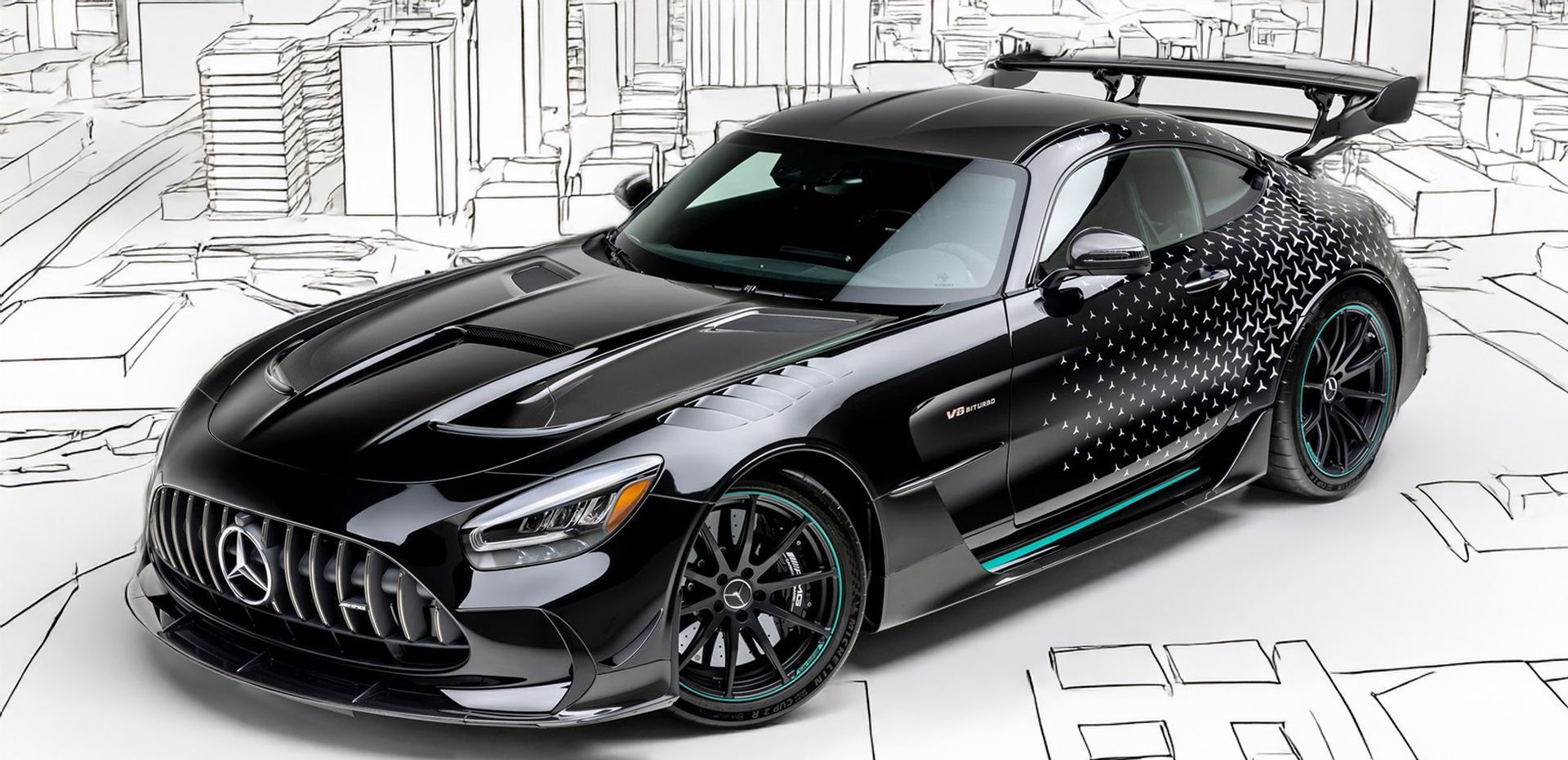
The Mercedes-AMG GT made its debut in 2015 as a successor to the highly regarded SLS AMG. As the second sportscar to be developed entirely in-house by Mercedes-AMG, it showcased the brand's commitment to producing highly advanced performance models. Shortly after its public release, Mercedes-AMG released the AMG GTR, which continued the development of the GT’s road-going chassis.
By 2021, Mercedes-AMG was ready to push the model’s already-impressive performance boundaries by bookending the GT lineup with a Black Series variation. Each model fortunate enough to be given the “Black Series” treatment was imbued with years of privateer and F1 motorsport experience, making for truly extreme driving dynamics. The fearsome M178 LS2 twin-turbo V-8 engine perhaps best exemplifies this impressive pedigree. Developed exclusively for use in the GT Black Series, it produces a remarkable 730 horsepower and 590 pound-feet of torque.
Mercedes-AMG has since debuted the production version of the range-topping Project One in 2022, a $2.72 million hypercar that incorporates Formula 1 hybrid powertrain technology. Mercedes offered a special edition of the GT Black Series exclusively to AMG Project One depositors, dubbed the “P One Edition.” 275 P-One units were produced worldwide, including 24 for the US market. Each features a distinctive livery inspired by the Mercedes-AMG F1 W11 EQ Performance race car. The livery features Mercedes’ three-pointed stars, said to be hand painted, as well as teal accents inside and out, in a nod to Petronas, Mercedes’ longtime F1 partner.


